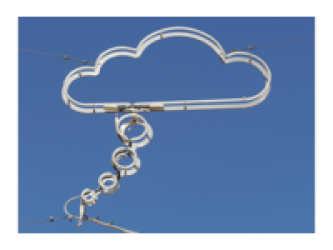meta data for this page

Tectonic waters
A wiki powered blog
Oceanic transform fault paper
Led by Peter Haas (Kiel U, DE), we have just submitted a new paper on the oceanic crust/transform fault evolution in the waters of São Tomé and Principé in the Gulf of Guinea. The manuscript is currently in open review in EGUSphere for publication in EGU's Solid Earth journal.
“Increased metamorphic conditions in the lower crust during oceanic transform fault evolution”
Oceanic transform faults connect the segments of active spreading ridges that slide past each other. In a classical view, transform faults are considered as conservative, where no material is added or destroyed. Recent studies, however, suggest that the crust in the transform fault region is deformed during different episodes. We combine high resolution 3D broadband seismic data with shipborne potential field data to study ancient fault zones in Albian-Aptian aged oceanic crust in the eastern Gulf of Guinea offshore São Tomé and Príncipe. The crust in this region is characterized by a thin, high-reflective upper crust, which is underlain by a thick, almost seismically transparent unit that comprises localized dipping reflectors, previously interpreted as extrusive lava flows. This layer defines the target area for inversion and forward modelling of the potential field data. The picked seismic horizons are used as geometrical boundaries of the crustal model. First, we perform a lateral parameter inversion for the lower crust, which provides vertical columns of density and magnetic susceptibility. Second, we sort the estimated values using a clustering approach and identify five groups with common parameter relationships. Third, we use the clustered lower crustal domains to define a consistent 3D model of the study area that aligns with the seismic structure and geological concepts, preferred to the simple inversion of the first step. The final model shows anomalous low susceptibility and medium to high density close to the buried fracture zones, which reflects increasing pressure and temperature conditions accompanied by a change of metamorphic facies. Our model indicates enhanced tectonic activity with an extensional component during the formation of oceanic crust that culminates in the transform region. These results are in line with recent studies and strengthen the impressions of a non-conservative character of ridge-transform intersections.
pyenv and MacPorts
I've recently switched from HomeBrew to MacPorts for a number of reasons. MacPorts doesn't have a version of pyenv included, so it needs to be installed manually.
I kept running into issues where pyenv doctor would fail because of missing libraries/dependencies. The following fixed it:
sudo port install libffi libxml2 openssl readline sqlite3 xz zlib export CPPFLAGS="-I/opt/local/include $CPPFLAGS" export LDFLAGS="-L/opt/local/lib $LDFLAGS"
South Atlantic Lithosphere thickness paper in press
A paper led by Peter Haas (Christian-Albrechts-Uni Kiel, Germany) on modeling the present-day lithosphere thickness along the conjugate South Atlantic margins is accepted and in press for Tectonics.
Key Points:
- A simple thermal LAB model for the South Atlantic passive margins has been developed
- The LAB model shows distinct variations along the margins that correlate with margin widths
- Conjugate margin pairs reflect an asymmetry in LAB depth patterns that are locally related to post break-up lithospheric thinning
Abstract:
The lithospheric architecture of passive margins is crucial for understanding the tectonic processes that caused the break-up of Gondwana. We highlight the evolution of the South Atlantic passive margins by a simple thermal lithosphere-asthenosphere-boundary (LAB) model based on onset and cessation of rifting, crustal thickness, and stretching factors. We simulate lithospheric thinning and select the LAB as the T=1330 °C isotherm, which is calculated by 1D advection and diffusion. Stretching factors and margin geometry are adjusted to state-of-the-art data sets, giving a thermal LAB model that is especially designed for the continental margins of the South Atlantic. Our LAB model shows distinct variations along the passive margins that are not imaged by global LAB models, indicating different rifting mechanisms. For example, we model up to 200 km deep lithosphere in the South American Santos Basin and shallow lithosphere less than 60 km in the Namibe Basin offshore Africa. These two conjugate basins reflect a strong asymmetry in LAB depth that resembles variations in margin width. In a Gondwana reconstruction, we discuss these patterns together with seismic velocity perturbations for the Central and Austral Segments of the margins. The shallow lithosphere in the Namibe Basin correlates with signatures of the Angola Dome, attributed to epeirogenic uplift in the Neogene, suggesting an additional component of post-break up lithospheric thinning.
Compiling pygplates on WSL Debian
I ran into a strange set of issues when trying to compile pygplates on the Windows Subsystem for Linux (WSL). Despite having all the requirements installed (e.g. Qt5, Boost etc). the compiler complained about Qt5 libraries not being present:
/usr/lib/qt5/bin/uic: error while loading shared libraries: libQt5Core.so.5: cannot open shared object file: No such file or directory
However, these are installed in /usr/lib/x86_64-linux-gnu/ like in any other Linux distro. Turns out that some other people have the same issues to load the shared Qt5 libraries when compiling software on WSL. This is solved by running the following line:
sudo strip --remove-section=.note.ABI-tag /usr/lib/x86_64-linux-gnu/libQt5Core.so.5
Code.PaleoEarthLabs.org and Sourcehut
I am slowly moving my BitBucket and GitHub repositories to self-hosted Fossil repositories available at https://code.paleoearthlabs.org. This means, there will be public issue trackers, wikis and forums.
Most of them will be mirrored to sourcehut which is a blazingly fast, simple, and FOSS-based alternative to the major players which also comes with mailinglists, todo/issuetracker and a wiki.
My GIT repositories (downstream mirrors of Fossil repos and pure GIT repos) can be found here https://git.sr.ht/~chhei. Note that the Fossil repository mirrors will only receive changes downstream from the original Fossil repos.
The following code is available now:
- Geological time scale color palettes for GMT and GPlates

